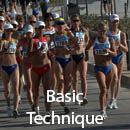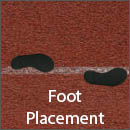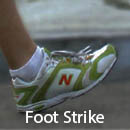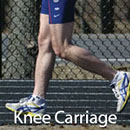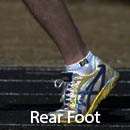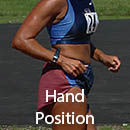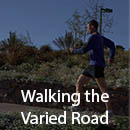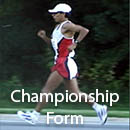Race Walking Technique
Arms
Proper use of the arms is key to mastering the hip motion just described. Synchronizing arm and hip motion maximizes efficiency and speed.
Each arm should travel from a couple of inches behind the hip to just above the chest line. You generate the primary power for arm movement by driving the shoulder on the backwards swing of your arm. Do not try to generate power by wildly pumping your arm backward or thrusting it forward. Just use the shoulder as a fulcrum and let the arms swing like a pendulum.
Adjust the angle between your upper and lower arm using your elbow. With the proper angle, when you drive back, your arm swings to proper position a few inches behind your hip. With a relaxed shoulder, your arm recoils forward to the proper position. The cycle repeats with another drive of the arm backwards. Keep in mind that with a relaxed shoulder and proper angle, the effort required to move your arm backwards is not much. Your arms move only as fast as your hips and legs; it’s all about synchronicity.

The ratio of upper and lower arm length varies from walker to walker. If you feel you are swinging your arms too far in front of your body, reduce the angle between your upper and lower arms. Similarly, if you have too short an arm swing, increase the angle.

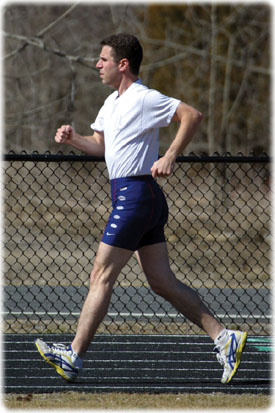
Arms Just Right
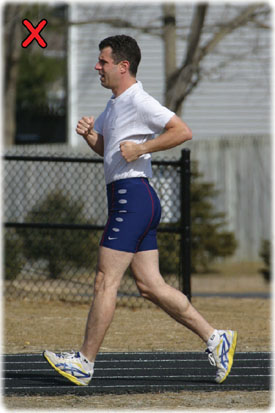
Arms Too Short

Arms Too Long
Observe the pictures above. The length of the arm swing is directly related to the angle between my upper and lower arm. As the angle increases, so does the length of arm swing. When my arm swing is too long, I overstride, causing too much of my stride to be in front of my body. In contrast, with my arms too short, the stride is not long enough behind my body. With the proper arm swing, I exhibit the optimal 30% in front, 70% behind ratio.



